New Danish royal titles and line of succession explained as Queen Margrethe II abdicates
Queen Margrethe of Denmark will abdicate from the throne this weekend after 52 years in power.
In a shocking speech on New Year’s Eve, Europe’s longest-reigning monarch, aged 83, announced her abdication, the country’s first in almost 900 years.
Her resignation means there will be a reshuffle in the line of succession, as well as a change in royal titles.
Next Sunday, when the queen signs her formal abdication during a state council, her son Crown Prince Frederik will become king.
But what will happen to the rest of the royal family?
Abdication: Queen Margrethe will abdicate from the throne on January 14
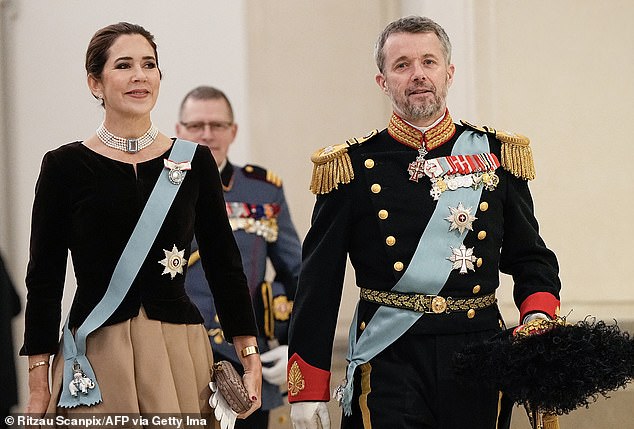
NEW MONARCHS: Crown Prince Frederick becomes King Frederick
CROWN PRINCE FREDERIK BECOMES KING
Frederick, 55, formerly known as Crown Prince Frederick, will become His Majesty King Frederick X.
Her Majesty the Queen will remain known as Her Majesty and bear the title HM Queen Margrethe.
CROWN PRINCESS MARY BECOMES QUEEN
Meanwhile, his wife, Crown Princess Mary – who is very popular with the Danish public for her dedication to royal duty and dedication to learning the language – will become Queen Consort.
She will also become the country’s first Australian-born queen.
The couple, who met in a bar during the Sydney Olympics in 2000, share four children, each occupying the next spots in the line of succession.
CHRISTIAN PRINCE BECOMES CROWN PRINCE
Their son Prince Christian becomes the next in line to the Danish throne at the age of 18.
His title will change to Crown Prince Christian as he will be the heir apparent.
He may have to act as head of state when his father is out of the country.
Princess Mary, Frederik’s brother Joachim and Princess Benedkeek can take over as head of state if Christian is too busy, but he will certainly have to take on more official duties.
Christian is often referred to as ‘Europe’s most eligible bachelor’ and his new title will only further elevate that status.

FIRST IN LINE: Prince Christian becomes Crown Prince Christian and is heir apparent
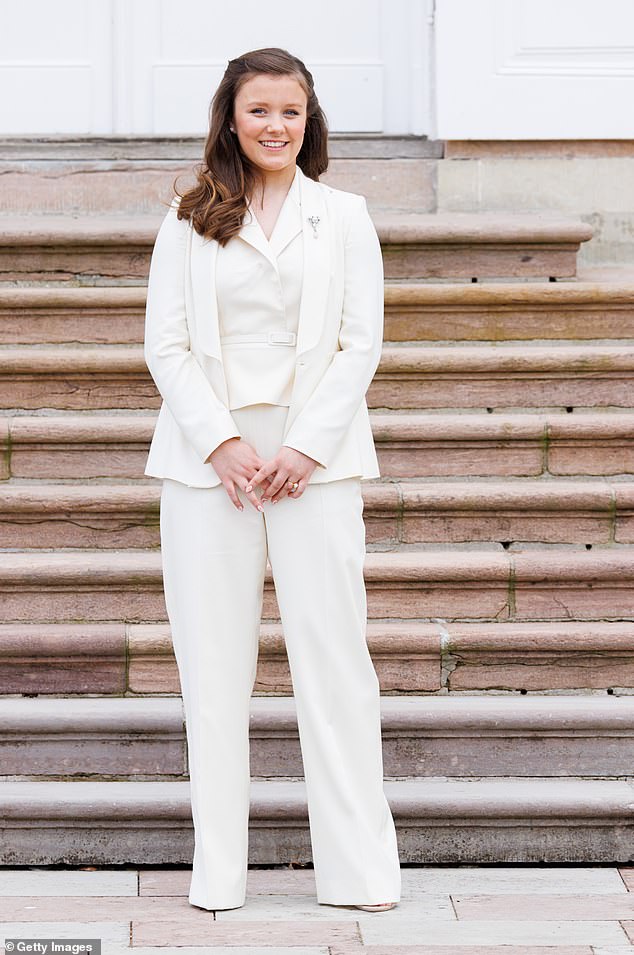
SECOND: Christian’s younger sister, 16-year-old Princess Isabella, becomes second in line
Christian’s younger sister, 16-year-old Princess Isabella, becomes second in line to the throne upon her father’s ascension.
Together with her parents, she has already taken on some tasks, such as visits to Greenland and the Faroe Islands.
In third and fourth place are the twins Prince Vincent and Princess Josephine, both 13.
The twins were born in 2011 and because Vincent is 26 minutes older than his sister, he is ahead of her in the line of succession.
In 2009, Danish primogeniture law changed, because Vincent would previously have also appeared for his older sister Isabella.
The law had previously stated that male children were given preference to succeed to the throne, but the rule was changed to only take age into account and not gender.
After the children, Christian’s younger brother, Prince Joachim, is fifth in line to the throne, but is unlikely to ever become monarch.
A huge rift erupted last year when Queen Margrethe stripped Joachim’s children of their royal titles, reportedly with the intention of allowing them to lead normal lives.
They are now Counts and Countesses and are called Their Excellencies – and in January the Danish Royal Family updated their website to reflect their new status.
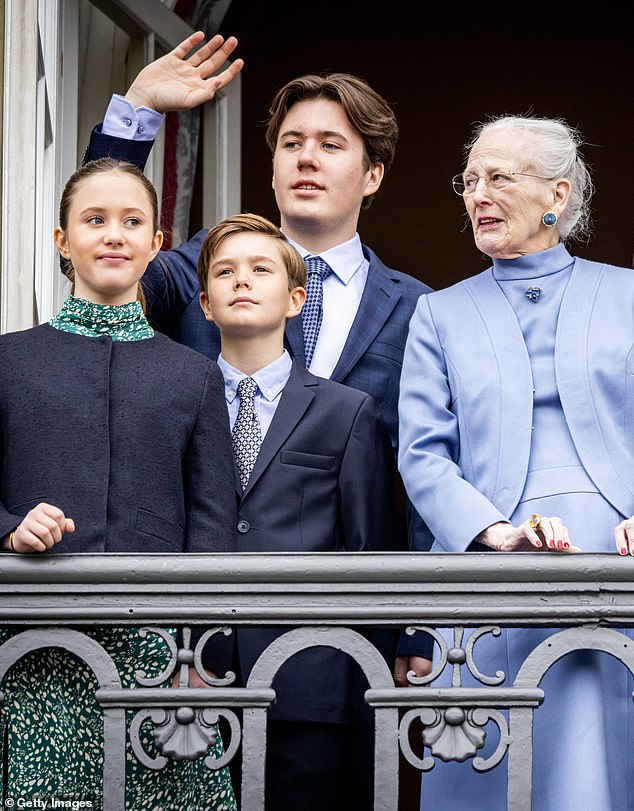
THIRD AND FOURTH: The twins Prince Vincent and Princess Josephine take the next places in the rankings (pictured with Prince Christian and Queen Margrethe last April)
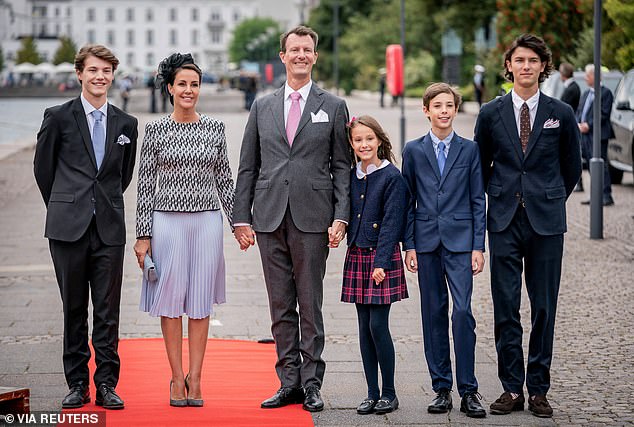
From left to right: Felix (SEVENTH), Marie, Prince Joachim (FIFTH), Athena (NINTH), Henrik (EIGHTH) and Nikolai (SIXTH) in September
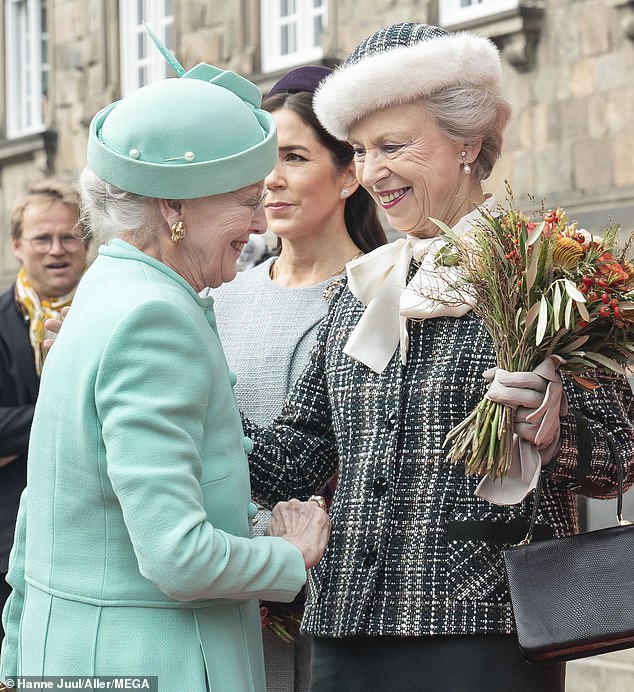
TENTH: Princess Benedkeek, sister of Queen Margrethe, herself 79, takes the last place in the line of succession
Despite no longer being considered official members of the Danish Royal Family, they have retained their position in the line of succession.
Joachim’s son, Count Nikolai, 24, is sixth in line to the throne, even though he is no longer a working royal.
Nikolai is a model with a large Instagram following.
His siblings, Felix, 21, Henrik, 14, and Athena, 11, are ranked seventh, eighth, and ninth respectively in the line of succession.
Queen Margrethe’s sister, Princess Benedkeek, herself 79, takes tenth place in the line of succession.
When she married, the Council of State said her children – Alexandra, Nathalie and Gustav – had to grow up during their years of formal education in Denmark to be eligible for succession.
Since she did not do this, they cannot inherit the crown.
Queen Margrethe’s other sister, Anne-Marie, relinquished her right to the throne – and that of her descendants – when she married King Constantine of Greece in 1964.
Anne Marie was the Queen Consort of Greece until the abolition of the monarch in 1973.
Although monarchs in several European countries have abdicated to allow younger royalties to take power, no such tradition exists in Denmark.
Margrethe herself has maintained for years that she would not stop in her role, but her health has forced her to change that in recent years.
The Danish head of state shocked the nation and many royal watchers around the world when she used her annual New Year’s Eve speech to announce on live television that she was stepping down as queen after 52 years.
In her speech, the 83-year-old said she had taken stock after undergoing back surgery last year and decided it was time “to leave the responsibility to the next generation” – namely her eldest son, Crown Prince Frederik.
The Danish royal family has been rocked by rumors in recent weeks – after photos emerged of Crown Prince Frederik enjoying a night out with a Mexican socialite in Madrid in October.
But despite the swirling rumors, Frederik and Mary have made several amorous displays in public.
